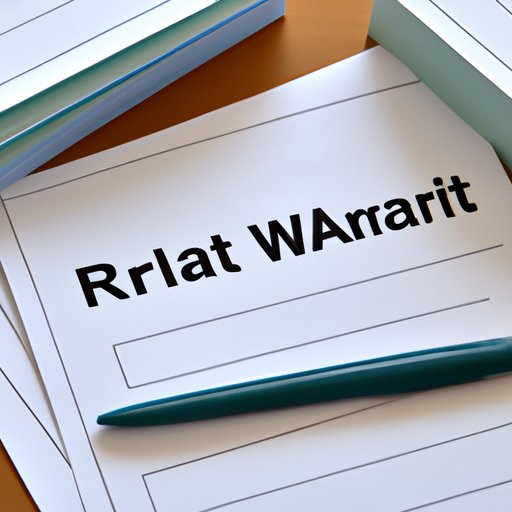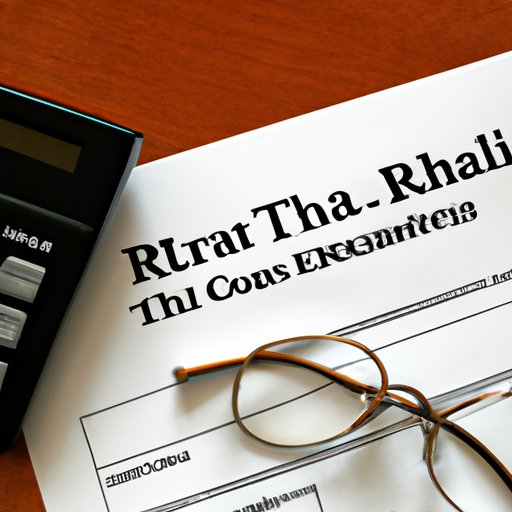
Introduction
Roth IRAs are popular retirement savings accounts that offer unique tax advantages. Contributions are made with after-tax dollars, but when it’s time to withdraw, qualified distributions are tax-free. However, there are rules around when and how you can take money out of a Roth IRA, and understanding them is important to avoid penalties and fees.
In this article, we will explore the benefits of a Roth IRA and the tax rules surrounding distributions. We will also look at the best time to withdraw money from your account, tips for avoiding penalties, and strategies for making the most of your Roth IRA withdrawals. Finally, we will discuss the risks associated with early withdrawals and the importance of seeking professional advice.
Understanding the benefits of a Roth IRA
One of the key benefits of a Roth IRA are the tax implications. Contributions are made with after-tax dollars, meaning you pay taxes upfront, but when it’s time to withdraw, qualified distributions are tax-free. This can make a big difference in retirement, when you may be living off your savings and every penny counts.
Another advantage of a Roth IRA is the flexibility it offers. Unlike traditional IRAs, there are no required minimum distributions (RMDs) at age 72. This means you can leave the money in the account to grow tax-free for as long as you like.
However, it’s important to note that while contributions can be withdrawn at any time without penalty, earnings cannot be withdrawn tax-free until you reach age 59 ½ and the account has been open for at least five years.

An overview of Roth IRA tax rules
When it comes to Roth IRA distributions, there are a few important rules to keep in mind. Firstly, there are different types of distributions: qualified and non-qualified. Qualified distributions are tax-free and penalty-free, as long as the account has been open for at least five years and one of the following applies: you are 59 ½ or older, you become disabled, you use up to $10,000 to buy, build, or rebuild a first home, or you use the money for qualified education expenses.
Non-qualified distributions, on the other hand, may be subject to taxes and penalties. If you withdraw earnings before age 59 ½ and the account has been open for less than five years, you may be subject to a 10% early withdrawal penalty. If you withdraw earnings after age 59 ½ and the account has been open for less than five years, you may be subject to taxes, but not the early withdrawal penalty. If you withdraw earnings after age 59 ½ and the account has been open for at least five years, you can do so tax-free and penalty-free.
It’s also worth noting that the age of the account holder can impact taxation. If you inherit a Roth IRA, for example, you will be subject to required minimum distributions (RMDs) at age 72, even if the original account holder had not yet reached that age. This means you will need to withdraw a certain amount each year, based on your life expectancy, and pay taxes on those distributions.
The best time to withdraw from a Roth IRA
When it comes to when you should withdraw from a Roth IRA, there are a few scenarios to consider. Firstly, many people choose to withdraw from their Roth IRA in retirement, when they need the money to live on and want to avoid taxes. Because qualified distributions are tax-free, using money from a Roth IRA can be a smart retirement strategy.
Another scenario where withdrawing from a Roth IRA may make sense is to pay for education expenses. If you, your spouse, your child, or your grandchild is enrolled in college or university, you can withdraw money from your Roth IRA to pay for qualified education expenses without penalty.
However, there are situations where withdrawing from a Roth IRA may not be the best option. For example, if you have significant credit card debt or other high-interest debt, it may make more sense to pay that off before tapping into your retirement savings. Additionally, if you are using the money for non-essential expenses, such as a vacation or a new car, you may want to reconsider and save that money for the future.
Tips for avoiding penalties when withdrawing from a Roth IRA
If you do need to withdraw money from your Roth IRA, there are ways to do it without incurring penalties or fees. Firstly, make sure the distribution is qualified. As we mentioned earlier, qualified distributions are tax-free and penalty-free, as long as the account has been open for at least five years and you meet certain criteria.
Another way to avoid penalties is to take advantage of the five-year rule. This rule states that earnings can be withdrawn tax-free and penalty-free after the account has been open for at least five years, regardless of your age. However, it’s important to note that this rule only applies to earnings, not contributions. If you withdraw contributions before age 59 ½, you may still be subject to taxes and penalties.
Finally, make sure to follow distribution rules. If you fail to take RMDs when you are required to, you may be subject to a penalty of 50% of the amount that should have been distributed. Additionally, if you take non-qualified distributions before age 59 ½ and the account has been open for less than five years, you may be subject to a 10% early withdrawal penalty.
A beginner’s guide to Roth IRA withdrawals
If you are new to Roth IRAs, you may be wondering how withdrawals work. Essentially, a Roth IRA withdrawal is when you take money out of the account. However, as we have discussed, there are rules around when and how you can do this.
Qualified distributions are tax-free and penalty-free, as long as the account has been open for at least five years and one of the following applies: you are 59 ½ or older, you become disabled, you use up to $10,000 to buy, build, or rebuild a first home, or you use the money for qualified education expenses. Non-qualified distributions may be subject to taxes and penalties.
It’s also important to understand the difference between contributions and earnings. Contributions are made with after-tax dollars and can be withdrawn at any time without penalty. Earnings are the money your contributions have earned over time, and can only be withdrawn tax-free and penalty-free under certain conditions.
If you do need to make a withdrawal, it’s important to understand the potential penalties and tax implications. Early withdrawals, or withdrawals that do not meet the criteria for qualified distributions, can be subject to a 10% early withdrawal penalty and taxes on earnings.
How to make the most of your Roth IRA withdrawals
If you are looking to maximize your Roth IRA withdrawals, there are strategies you can use. Firstly, make sure you understand the five-year rule. After the account has been open for at least five years, you can withdraw earnings tax-free and penalty-free, regardless of your age. This can be a useful strategy if you need to withdraw money before age 59 ½.
Another strategy is to withdraw contributions first. Because contributions are made with after-tax dollars, they can be withdrawn at any time without penalty. This allows you to leave your earnings in the account to grow tax-free for longer.
Understanding required minimum distributions (RMDs) is also important. While Roth IRAs do not have RMDs until age 72, other retirement accounts such as traditional IRAs and 401(k)s do. If you have these types of accounts, it’s important to factor in RMDs when planning your retirement income.
The risks of withdrawing from a Roth IRA early
While Roth IRAs offer unique tax advantages, there are risks associated with withdrawing money early. Early withdrawals, or withdrawals that do not meet the criteria for qualified distributions, can be subject to a 10% early withdrawal penalty and taxes on earnings.
Additionally, withdrawing money early means you miss out on the potential for growth and compounding. Because Roth IRAs are designed for long-term retirement savings, it’s important to consider the impact of early withdrawals on your overall retirement income.
Finally, it’s worth noting that withdrawing money from a Roth IRA can impact your eligibility for certain tax credits and deductions. If you are receiving income-based benefits such as Medicaid or the ACA health insurance premium tax credit, withdrawing money from your Roth IRA could increase your income and reduce your eligibility.
Conclusion
A Roth IRA can be a valuable tool for retirement savings, but it’s important to understand the rules around distributions to avoid penalties and maximize returns. By withdrawing money at the right time, following distribution rules, and understanding the potential risks, you can make the most of your Roth IRA. Keep in mind that decisions around Roth IRA withdrawals should be made carefully, and seeking professional advice is always recommended.




